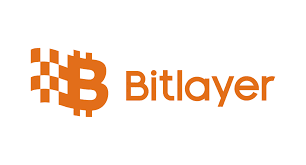Throughout the development of blockchain and crypto finance, Bitcoin has always played the role of 'digital gold.' However, for a long time, Bitcoin has exhibited significant shortcomings in financialization and application layer expansion: a lack of native smart contract capabilities, frequent security issues with cross-chain bridges, and limited transaction performance. These constraints mean that despite its large market value, Bitcoin lacks a core position in the DeFi ecosystem. It is against this backdrop that #Bitlayer has emerged. Driven by @BitlayerLabs , the Bitlayer project is opening new development spaces for Bitcoin finance (BTCFi) through a series of innovative designs.

1. Strategic Opportunities in the BTCFi Sector
In recent years, traditional financial institutions and listed companies have gradually increased their exposure to Bitcoin, and market demand is no longer limited to holding and value storage. BTC holders are increasingly concerned with how to realize asset appreciation and yield generation. This trend has led to the concept of BTCFi, building diversified financial services such as lending, staking, derivatives, and liquidity mining on Bitcoin.
However, the implementation of BTCFi must rely on secure cross-chain solutions and high-performance execution environments. The success of Ethereum DeFi stems from a complete infrastructure; for Bitcoin to follow the same path, it requires a systematic architecture that inherits its security attributes while breaking performance limitations. #Bitlayer is an important force filling this market gap.
2. Core Technical Architecture: BitVM Bridge and Bitlayer Network
1. BitVM Bridge
As a core component of #Bitlayer, BitVM Bridge is a next-generation trust-minimized BTC cross-chain solution. Its design philosophy aims to minimize reliance on intermediaries through a challenge verification mechanism, balancing security and efficiency in the cross-chain process. Notably, BitVM Bridge has already been deployed on the mainnet, becoming one of the first projects based on the BitVM framework.
Compared to traditional cross-chain bridges, the advantages of BitVM Bridge are:
Stronger Security: The cross-chain process relies almost entirely on Bitcoin's native security architecture.
Lower Costs: The challenge verification model reduces the high maintenance costs associated with multiple nodes.
Higher Practicality: BTC can be quickly converted into DeFi usable assets (YBTC), releasing liquidity.
2. Bitlayer Network
Bitlayer Network is a high-performance Rollup network built for Bitcoin, aiming to provide a near-real-time, low-latency execution environment. Its features include:
EVM Compatibility: Supports migration of Ethereum development toolchains and smart contracts, lowering the development threshold.
Low-latency Execution: Execution delays are less than 10 milliseconds, significantly enhancing user experience.
Security Inheritance: All state changes are verified on the Bitcoin network, ensuring finality.
Through the combination of BitVM Bridge and Bitlayer Network, #Bitlayer has achieved a complete closed loop from cross-chain asset input to high-performance financial applications, truly opening up scalable infrastructure space for BTCFi.
3. Ecological Cooperation: Multi-layered Layout Across Public Chains and Mining Pools
Ecological cooperation is one of the key indicators for measuring the sustainable development of public chain projects. @BitlayerLabs has demonstrated strong strategic layout capabilities in this regard.
At the public chain level, #Bitlayer has collaborated with leading L1s such as Sui, Base, Arbitrum, and Cardano. This means Bitcoin's liquidity can seamlessly enter these emerging or mature ecosystems, providing cross-chain support for BTCFi application scenarios.
In terms of computing power and liquidity, Bitlayer collaborates with major global mining pools such as Antpool, F2Pool, and SpiderPool. These mining pools not only provide secure endorsement and computing power support but will also become a natural entry point for YBTC liquidity. The inclusion of mining pool user groups can quickly expand the user base of BTCFi.
This 'dual-layer cooperation model' ensures performance and security at the technical level, while also providing real funding and user sources for the long-term development of #Bitlayer.
4. Capital Support and Market Validation
Support from the capital market for projects is often a barometer of their potential and sustainability. #Bitlayer has completed $25 million in institutional financing, with investors including top global capitals like Polychain Capital, Franklin Templeton, Framework Ventures, ABCDE, etc. This not only provides ample funding for the project's R&D and ecological expansion but also reflects the high recognition of its strategic positioning in the capital market.
At the same time, @BitlayerLabs is collaborating with Binance Wallet to launch the 'Booster' initiative, which is currently in its second phase. Users can participate in the initiative to earn BTR token rewards. Additionally, Bitlayer will launch a Pre-TGE to provide an entry window for early users and investors. These market actions not only enhance user engagement but also lay the groundwork for launching the token economic model.
5. Long-term Value and Industry Impact
#Bitlayer is significant not only for bringing DeFi functionality to Bitcoin but also for reshaping Bitcoin's role in the entire crypto finance system. Through a secure and scalable architecture, BTC is no longer just a store of value but becomes a core asset driven by liquidity and financial innovation.
For the BTCFi sector, the implementation of Bitlayer has three major long-term impacts:
1. Asset Transformation: BTC is transforming from a static held asset to an efficient financial collateral.
2. Ecological Integration: Bitcoin can achieve deep interoperability with Ethereum, L1 public chains, and DeFi protocols.
3. Capital Effect: With the participation of institutions and mining pools, BTCFi is expected to attract more funds, bringing scalable industry dividends.
@BitlayerLabs is advancing through technology and ecology
A comprehensive layout in technology, ecology, and capital promotes the maturity of Bitcoin's financial infrastructure. In the future, #Bitlayer may become the core hub of BTCFi, driving Bitcoin's full transformation from 'digital gold' to 'financial underlying asset.'




